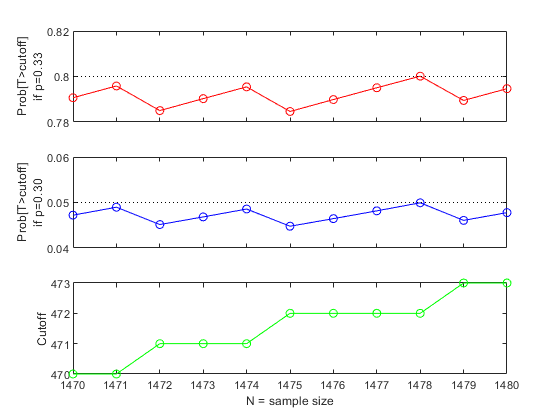Hypothesis Tests
Statistics and Machine Learning Toolbox™ provides parametric and nonparametric hypothesis tests to help you determine if your sample data comes from a population with particular characteristics.
Distribution tests, such as Anderson-Darling and one-sample Kolmogorov-Smirnov, test whether sample data comes from a population with a particular distribution. Test whether two sets of sample data have the same distribution using tests such as two-sample Kolmogorov-Smirnov.
Location tests, such as z-test and one-sample t-test, test whether sample data comes from a population with a particular mean or median. Test two or more sets of sample data for the same location value using a two-sample t-test or multiple comparison test.
Dispersion tests, such as Chi-square variance, test whether sample data comes from a population with a particular variance. Compare the variances of two or more sample data sets using a two-sample F-test or multiple-sample test.
Determine additional features of sample data by cross-tabulating, conducting a run test for randomness, and determine the sample size and power for a hypothesis test.
Functions
Topics
- Hypothesis Testing
Hypothesis testing is a common method of drawing inferences about a population based on statistical evidence from a sample.
- Hypothesis Test Terminology
All hypothesis tests share the same basic terminology and structure.
- Hypothesis Test Assumptions
Different hypothesis tests make different assumptions about the distribution of the random variable being sampled in the data.
- Available Hypothesis Tests
View hypothesis tests of distributions and statistics.

